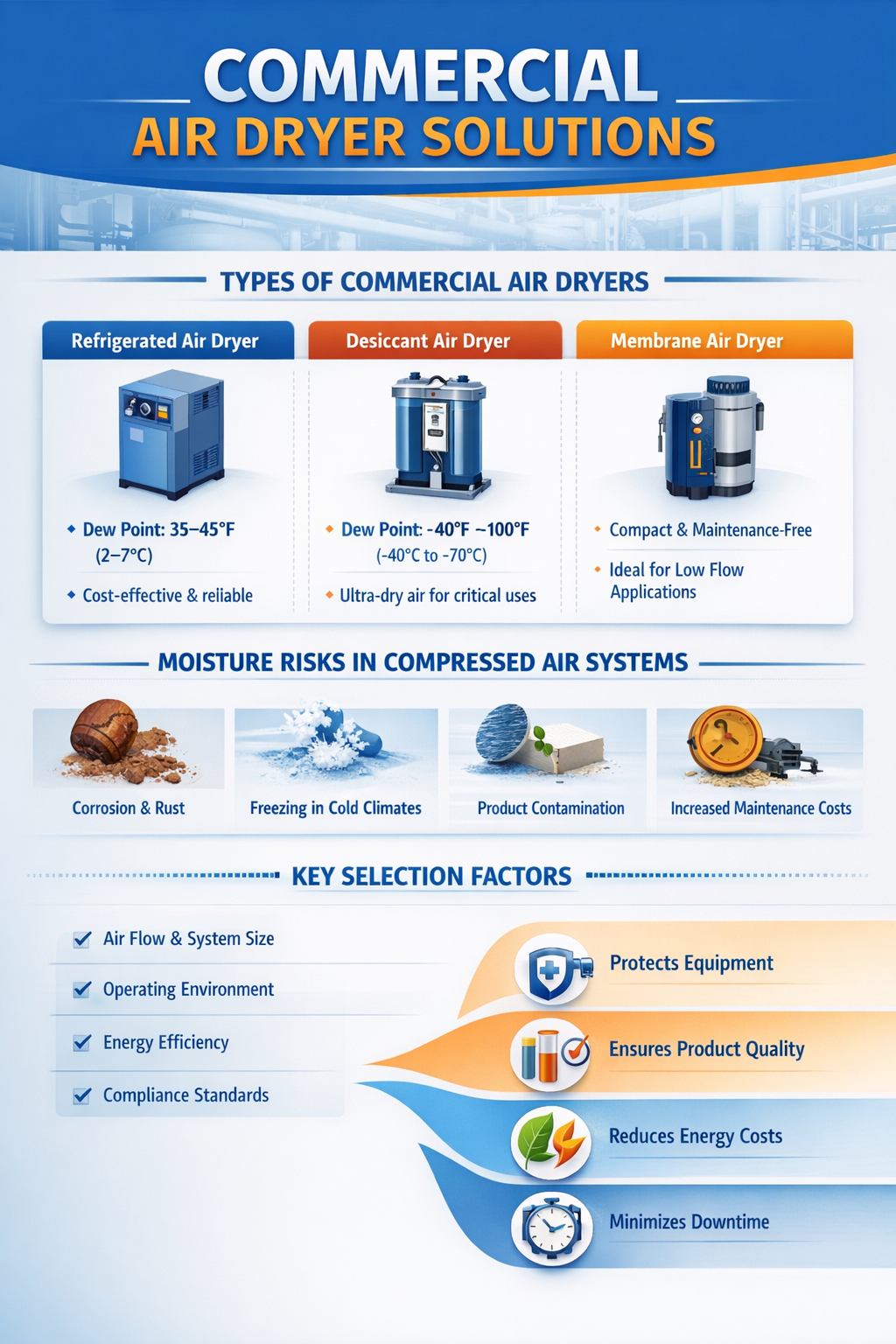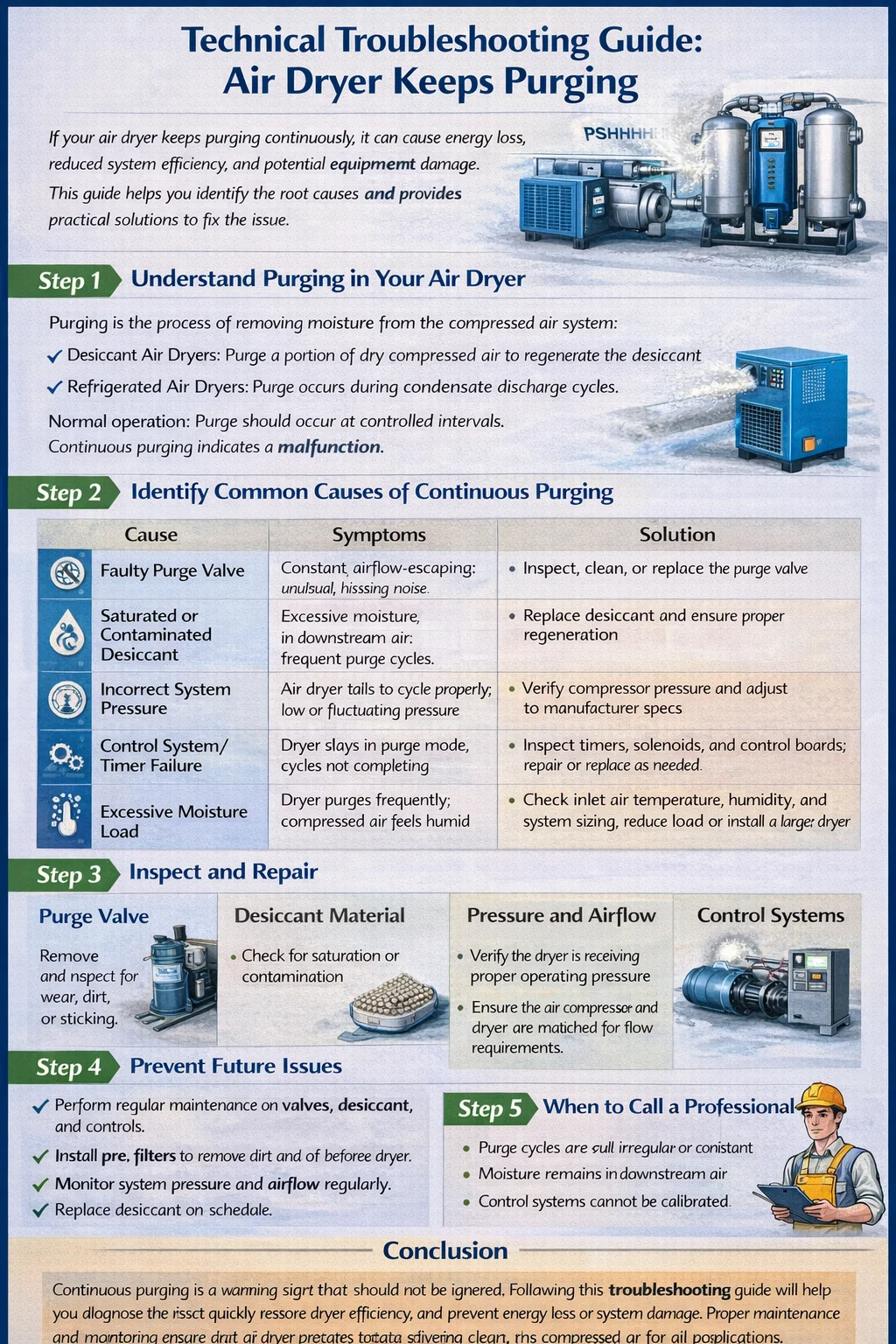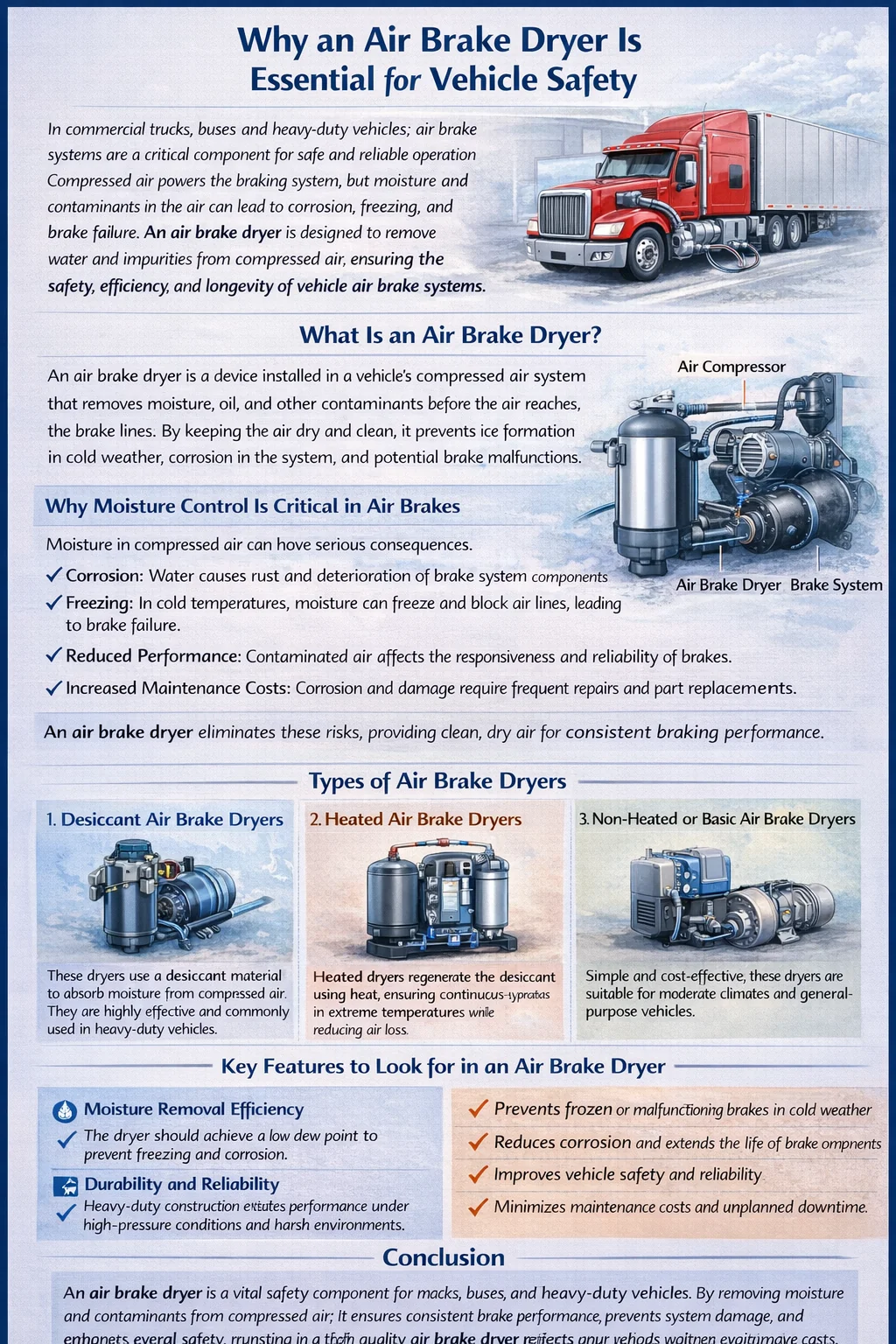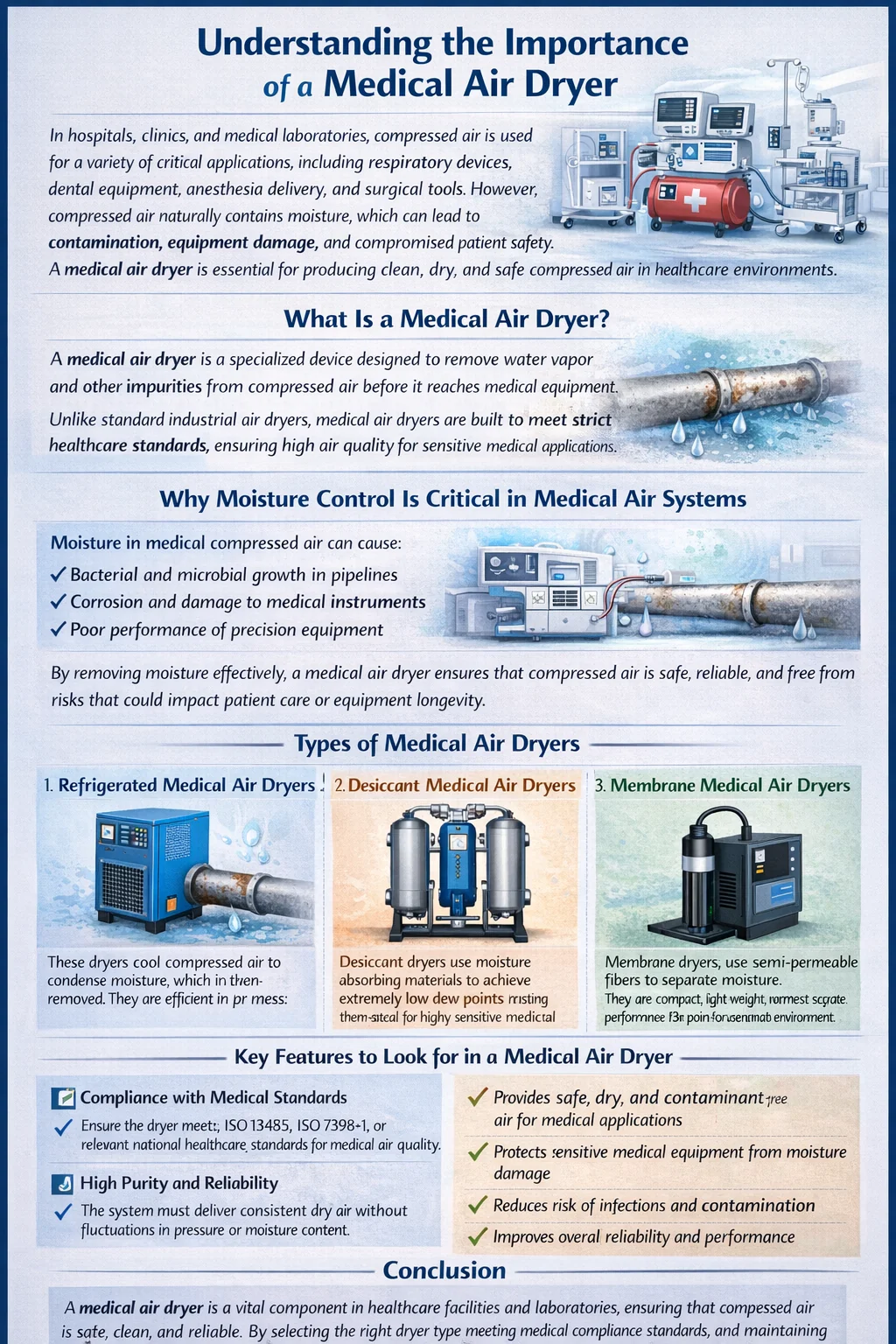Introduction: Why a Desiccant Air Dryer for Air Compressor Is Essential
In industries where moisture-free air is critical, the desiccant air dryer for air compressor is an indispensable component. Unlike standard air dryers, desiccant air dryers offer extremely low dew points (as low as -40°C or lower), making them ideal for high-precision applications such as pharmaceuticals, electronics, food processing, and paint spraying.
Moisture in compressed air can cause corrosion, product defects, and expensive downtime. A desiccant air dryer for air compressor efficiently removes water vapor, protecting downstream tools and enhancing system reliability.
What Is a Desiccant Air Dryer for Air Compressor?
A desiccant air dryer for air compressor is a type of compressed air dryer that uses adsorbent materials (typically activated alumina or silica gel) to extract moisture from air. It is often used in environments where refrigerated dryers cannot achieve the required dew point.
These dryers come in two main types:
Heatless Desiccant Air Dryers
Use purge air to regenerate the desiccant material. Economical and suitable for general industrial use.Heated Desiccant Air Dryers
Use external heaters to regenerate desiccant. More energy-efficient and suitable for large-scale or continuous operations.
Benefits of a Desiccant Air Dryer for Air Compressor
✅ Ultra-Low Dew Point
Removes up to 99.99% of moisture, achieving dew points as low as -40°F or even -100°F.
✅ Prevents Corrosion & Contamination
Eliminates the risk of rust, scaling, and product contamination caused by humid air.
✅ Increases Equipment Lifespan
Keeps pneumatic tools, valves, and machines running longer with fewer breakdowns.
✅ Improves Product Quality
Vital for paint jobs, packaging, and electronics where moisture can cause surface or circuit damage.
✅ Cost-Efficient in Sensitive Applications
Reduces maintenance, product rejections, and production halts.
Common Applications of Desiccant Air Dryer for Air Compressor
The desiccant air dryer for air compressor is widely used in:
Pharmaceutical and biotech labs
Automotive paint booths
Semiconductor and electronics manufacturing
Food and beverage packaging
Oil and gas operations
Medical air supply systems
Wherever clean, dry, and reliable compressed air is essential, desiccant air dryers are the solution.
Key Features of Our Desiccant Air Dryer for Air Compressor
Precision Moisture Removal – Dew points down to -100°F
Dual Tower Design – Continuous drying through automatic tower switching
Energy-Saving Options – Available in heated or heatless models
Intelligent Control Panel – For automated purge control and monitoring
Corrosion-Resistant Build – Ensures durability in harsh environments
Easy Maintenance – Quick desiccant replacement, minimal downtime
🧊 Ultra-Dry Air Starts Here – Desiccant Air Dryer Limited Offer!
Upgrade your compressed air system with our high-efficiency desiccant air dryer for air compressor. Built for demanding applications, our dryers deliver ultra-low dew points and long-term reliability.
✅ -40°C to -100°C dew point performance
✅ Long-life desiccant materials
✅ Compact footprint for easy installation
✅ Available in multiple CFM ratings for all system sizes
💡 Don’t let moisture ruin your operation. Invest in clean, dry, and reliable air today.
🛒 Shop Desiccant Air Dryers Now
How to Choose the Right Desiccant Air Dryer for Air Compressor
When selecting a desiccant air dryer for air compressor, consider:
Air Flow Capacity (CFM): Match dryer capacity to your compressor output.
Desired Dew Point: Choose based on application sensitivity.
Purge Type: Heatless models use more air; heated models save purge air.
Operating Environment: Consider ambient temperature and space limitations.
Automation Needs: Look for smart controls and alarms for critical systems.
Maintenance Access: Ensure easy serviceability and desiccant changeouts.
Installation & Maintenance Tips
Install downstream of the air compressor and after the pre-filter.
Always use a pre-filter to capture oil and particles before reaching the dryer.
Check dew point indicators regularly to monitor performance.
Replace desiccant beads as per manufacturer guidelines (typically every 1–2 years).
Drain moisture from pre-filters and tanks daily to avoid overload.
Frequently Asked Questions (FAQ)
Q1: What is the purpose of a desiccant air dryer for air compressor?
It removes water vapor from compressed air to prevent corrosion, contamination, and equipment failure in moisture-sensitive applications.
Q2: What dew point can I achieve with a desiccant air dryer?
Most desiccant dryers offer dew points of -40°F (-40°C), with some reaching -100°F (-73°C).
Q3: Is a desiccant air dryer better than a refrigerated dryer?
Yes, if ultra-dry air is required. Desiccant dryers are superior in dew point performance, especially in cold or precision-critical environments.
Q4: How often should I replace the desiccant material?
Typically every 12–24 months, depending on usage and air quality.
Q5: Can I install it myself?
Yes, but it’s recommended to have a qualified technician handle the initial setup and routine servicing for optimal performance.
Conclusion: Invest in a Desiccant Air Dryer for Air Compressor You Can Rely On
If your operations depend on ultra-clean and ultra-dry compressed air, then a desiccant air dryer for air compressor is not a luxury—it’s a necessity. From reducing system failures to protecting your finished products, this equipment delivers lasting value.
Whether you’re upgrading an old system or installing a new one, our desiccant dryers are engineered for performance, longevity, and peace of mind.
🔧 Ready to eliminate moisture problems? Explore our full range of desiccant air dryers built for every industry and budget.
Related products:
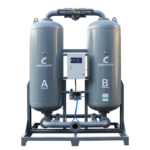
2, Minimum regeneration gas consumption
3. Long service life of adsorbent
4. Easy maintenance
5. High safety
6. High reliability
7.Adjustable regeneration gas consumption
8. Optional dew point monitoring and control system
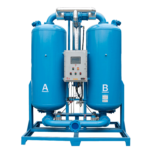
2. Resists chemical corrosion and extends service life
3. Special sealing technology prevents flammable gases or dust from entering theinterior of the machine
4. Regeneration gas consumption can be adjusted, with energy saving and dewpoint adjustment function
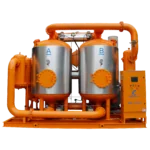
2, Customized high-performance adsorbent, 20% filling margin;
3. Branded high-pressure blower, high-performance pneumatic valve, high-efficiency cooler designed by HTFS software, reliable performance and long life;
4. 304 stainless steel control gas pipeline, specially designed diverter, highadsorbent utilization rate and low gas pressure loss;


